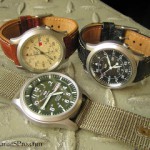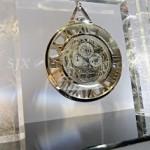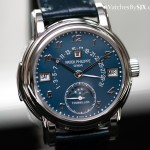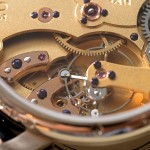EDITORIAL: The Gradual Return Of Value
With the slowdown in the luxury watch business well established, the industry is reacting in a predictable manner that bodes well for the watch buyer.At the start of last year I wrote an editorial predicting a slowdown in the watch business, as well as the possible consequences. That has come to pass. Value is returning, gradually and timidly, to watches and the watch buyer should rejoice.
According to the trade body Federation of the Swiss Watch Industry (FHS), In the year 2000 the Swiss watch industry exported 29.7 million watches worth SFr9.3 billion. Last year exports totalled 28.6 million watches – with a value of almost SFR21 billion. That’s about US$22 billion of exports. The 14 years since the turn of the century comprised almost uninterrupted growth, with the business enjoying double digit expansion year on year.
And the bulk of the growth in the watch business came from high-end watches, those with an export price of over SFr3000. Export numbers of those watches tripled from the year 2000 to 2014, rising from 488,000 to 1.6 million. And most incredibly, the value of those watches rose from SFr3.2 billion to an eye watering SFr13.8 billion. In short, expensive watches got more expensive, but still sold in massive numbers.
Growth flattened in 2013, and remained stagnant in 2014. Swiss watch exports rose just 1.9% last year, signalling the good times are over for good. Even though markets like the United States are picking up post-housing crisis, the major Asian markets of China and Hong Kong continue to shrink. Between them the two account for a quarter of Swiss watch exports.
Watch brands that could see what was coming did the necessary in 2013, reducing the prices of their watches, the most immediate response possible. Two of the first movers were Audemars Piguet and Patek Philippe, coincidentally family owned firms. AP actually cut prices, while Patek Philippe sidestepped the issue by introducing replacement models in different colours at lower prices. Family firms often have greater flexibility in such situations; the large listed luxury groups have an institutionalised philosophy of pricing that means it’s like trying to halt the Titanic.
Price reductions continued this year, with Patek Philippe reducing retail prices in Asia and the Americas. Cartier recently reduced its prices in the United States, while TAG Heuer is doing the same in some markets. This is just the beginning, the tide has obviously turned. and rands that have carved out a niche in the most expensive segment of the market, Greubel Forsey being the prime example, must adapt or face hard times.
Consumers will benefit from lower prices, with new introductions being priced lower than the equivalent (or identical) models from earlier years. Again this is more evident at Baselworld, which has more family owned firms showing, than the Richemont Group dominated SIHH fair. The new Patek Philippe Ref. 5170G for example retails for about a quarter less than what it did when the model was first introduced five years ago. Such wrenching shifts in price ripple across the business, since purchasing decisions are often relative.
For the longest time Patek Philippe had the pricing power to charge more than Vacheron Constantin, just as Audemars Piguet did again Hublot, for historical reasons and also brand equity. But the new 5170G now costs almost exactly the same as the equivalent Vacheron Constantin chronograph.
Just as important as price reductions is the gradual return of value. More entry level watches are being introduced, and better watches are being sold for less – giving the consumer more bang for the buck. This trend reinforces itself as consumers inevitably start to question the status quo. If a particular watch or complication now costs, why shouldn’t everything else?
But we are by no means at the end of the tunnel. This is just the beginning, with the slowdown continuing for at least another one or two years, and single digit growth after that. Major brands will survive, those that play it smart will thrive, perhaps even successfully challenging the leaders of the pack. Unfortunately some of the interesting products from independent watchmakers will disappear along with their makers. That is sad but inevitable. Nonetheless the outlook is sunny for the watch buyer, because times in the watch business have not been so bad in a long, long while. Watch buyers, rejoice.
Back to top.







